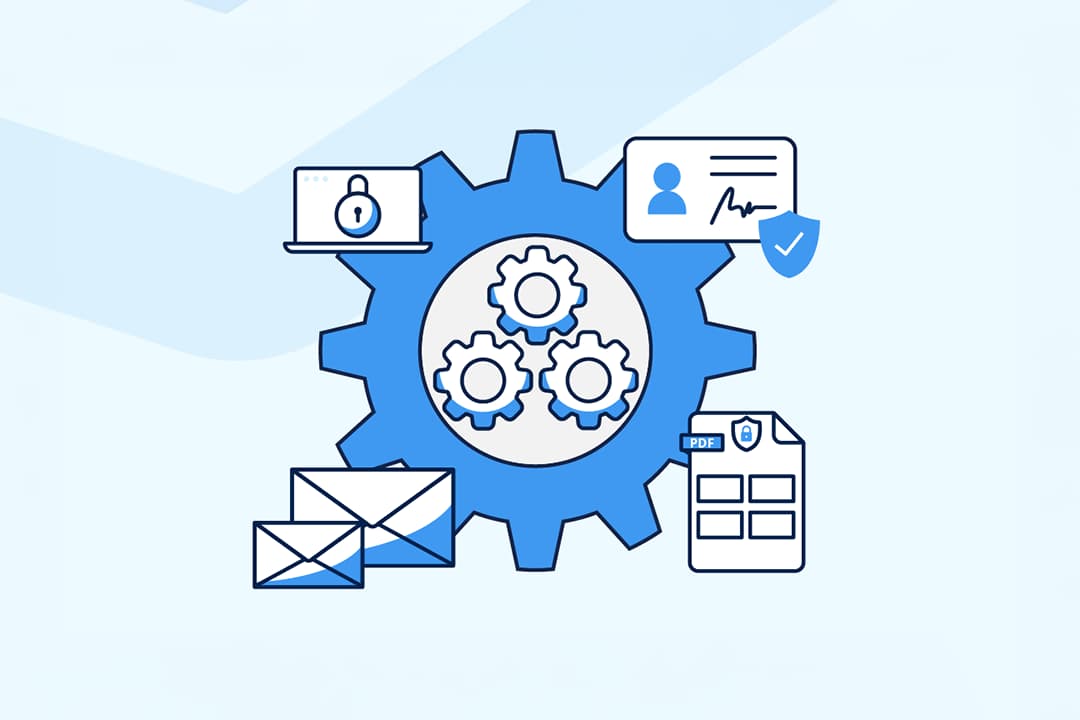
Introduction
Cloud computing has revolutionized how businesses operate, offering unprecedented scalability, flexibility, and cost-effectiveness. For Sri Lankan businesses, cloud solutions present an opportunity to compete globally while reducing infrastructure costs and improving operational efficiency. This comprehensive guide explores cloud computing benefits, implementation strategies, and best practices specifically tailored for Sri Lankan businesses looking to leverage cloud technology for growth and innovation.
Understanding Cloud Computing
What is Cloud Computing?
Cloud computing is the delivery of computing services—including servers, storage, databases, networking, software, analytics, and intelligence—over the internet ("the cloud") to offer faster innovation, flexible resources, and economies of scale.
Key Characteristics
- On-Demand Self-Service: Users can provision computing capabilities automatically
- Broad Network Access: Services available over the network through standard mechanisms
- Resource Pooling: Computing resources pooled to serve multiple consumers
- Rapid Elasticity: Capabilities can be rapidly and elastically provisioned
- Measured Service: Cloud systems automatically control and optimize resource use
Types of Cloud Services
1. Infrastructure as a Service (IaaS)
What it Provides:
- Virtual machines and servers
- Storage and networking
- Operating systems
- Development tools
- Database management
Popular Providers:
- Amazon Web Services (AWS)
- Microsoft Azure
- Google Cloud Platform
- IBM Cloud
- Local cloud providers
Benefits for Sri Lankan Businesses:
- No upfront hardware investment
- Pay-as-you-use pricing model
- Global infrastructure access
- Automatic scaling capabilities
- Reduced IT maintenance burden
2. Platform as a Service (PaaS)
What it Provides:
- Development and deployment platforms
- Database management systems
- Business intelligence tools
- Integration services
- Application hosting
Use Cases:
- Web application development
- Mobile app backends
- Data analytics platforms
- Business process automation
- API development and management
Advantages:
- Faster development cycles
- Reduced infrastructure management
- Built-in scalability
- Integrated development tools
- Automatic updates and patches
3. Software as a Service (SaaS)
What it Provides:
- Complete software applications
- User interfaces and dashboards
- Data storage and management
- Automatic updates
- Multi-tenant architecture
Popular SaaS Applications:
- Customer Relationship Management (CRM)
- Enterprise Resource Planning (ERP)
- Human Resources Management
- Accounting and Finance
- Communication and Collaboration
Sri Lankan Business Benefits:
- Immediate access to enterprise software
- No installation or maintenance required
- Automatic updates and security patches
- Scalable user licensing
- Mobile and remote access
Cloud Deployment Models
1. Public Cloud
Characteristics:
- Shared infrastructure
- Multi-tenant environment
- Internet-based access
- Pay-per-use pricing
- Managed by cloud provider
Advantages:
- Cost-effective for small businesses
- No infrastructure investment
- Automatic scaling
- Global availability
- Regular updates and maintenance
Best For:
- Startups and small businesses
- Non-sensitive applications
- Variable workloads
- Global operations
- Cost-conscious organizations
2. Private Cloud
Characteristics:
- Dedicated infrastructure
- Single-tenant environment
- Enhanced security and control
- Customizable configurations
- On-premises or hosted
Advantages:
- Enhanced security and compliance
- Customizable configurations
- Better performance control
- Regulatory compliance
- Data sovereignty
Best For:
- Large enterprises
- Regulated industries
- Sensitive data handling
- Custom requirements
- Compliance-critical applications
3. Hybrid Cloud
Characteristics:
- Combination of public and private clouds
- Data and application portability
- Flexible deployment options
- Workload optimization
- Risk distribution
Advantages:
- Best of both worlds
- Flexibility and scalability
- Cost optimization
- Compliance flexibility
- Disaster recovery options
Best For:
- Growing businesses
- Mixed workload requirements
- Compliance needs
- Legacy system integration
- Gradual cloud migration
4. Multi-Cloud
Characteristics:
- Multiple cloud providers
- Vendor independence
- Risk mitigation
- Best-of-breed solutions
- Cost optimization
Advantages:
- Avoid vendor lock-in
- Optimize costs across providers
- Leverage provider-specific features
- Improve reliability and availability
- Negotiate better terms
Benefits for Sri Lankan Businesses
1. Cost Savings
Reduced Capital Expenditure:
- No upfront hardware investment
- Eliminated data center costs
- Reduced IT staff requirements
- Lower maintenance expenses
- Pay-per-use pricing model
Operational Cost Reduction:
- Reduced electricity and cooling costs
- Lower software licensing fees
- Decreased maintenance overhead
- Simplified IT management
- Automatic updates and patches
ROI Examples:
- Small businesses: 30-50% cost reduction
- Medium businesses: 40-60% cost reduction
- Large enterprises: 50-70% cost reduction
2. Scalability and Flexibility
Automatic Scaling:
- Handle traffic spikes automatically
- Scale down during low usage
- Global infrastructure access
- Elastic resource allocation
- Performance optimization
Business Agility:
- Rapid deployment of new services
- Quick market response capability
- Flexible resource allocation
- Easy integration with partners
- Faster time to market
3. Enhanced Security
Built-in Security Features:
- Advanced encryption
- Identity and access management
- Network security
- Threat detection and prevention
- Compliance certifications
Security Advantages:
- Regular security updates
- Expert security management
- Advanced monitoring and logging
- Disaster recovery capabilities
- Data backup and protection
4. Improved Collaboration
Remote Work Enablement:
- Access from anywhere
- Real-time collaboration tools
- Shared document management
- Video conferencing integration
- Mobile device support
Team Productivity:
- Centralized data and applications
- Version control and synchronization
- Automated workflows
- Communication tools integration
- Project management platforms
Popular Cloud Providers for Sri Lankan Businesses
1. Amazon Web Services (AWS)
Services Offered:
- Compute (EC2, Lambda)
- Storage (S3, EBS)
- Database (RDS, DynamoDB)
- Networking (VPC, CloudFront)
- Analytics and AI/ML
Advantages:
- Largest market share
- Comprehensive service portfolio
- Global infrastructure
- Strong security features
- Extensive documentation
Sri Lankan Considerations:
- No local data centers
- Higher latency for some services
- USD pricing
- Strong global support
2. Microsoft Azure
Services Offered:
- Virtual Machines
- App Services
- SQL Database
- Active Directory
- Office 365 integration
Advantages:
- Strong enterprise integration
- Hybrid cloud capabilities
- Office 365 integration
- Windows ecosystem support
- Strong security features
Sri Lankan Considerations:
- Good enterprise adoption
- Strong local partner network
- Hybrid cloud options
- Compliance certifications
3. Google Cloud Platform (GCP)
Services Offered:
- Compute Engine
- Cloud Storage
- BigQuery
- AI/ML services
- Kubernetes Engine
Advantages:
- Strong AI/ML capabilities
- Excellent data analytics
- Competitive pricing
- Open source friendly
- Strong developer tools
Sri Lankan Considerations:
- Growing market presence
- Strong analytics capabilities
- Competitive pricing
- Good for data-heavy applications
4. Local and Regional Providers
Advantages:
- Local data centers
- Lower latency
- Local currency pricing
- Local support
- Data sovereignty
Considerations:
- Limited service portfolio
- Smaller scale
- Regional availability
- Support capabilities
Implementation Strategy
Phase 1: Assessment and Planning (Weeks 1-4)
Current State Analysis:
- Infrastructure inventory
- Application assessment
- Data classification
- Security requirements
- Compliance needs
Cloud Readiness Assessment:
- Technical readiness
- Organizational readiness
- Skills assessment
- Change management planning
- Risk evaluation
Strategy Development:
- Cloud adoption strategy
- Provider selection
- Migration planning
- Cost analysis
- Timeline development
Phase 2: Pilot Implementation (Weeks 5-12)
Pilot Project Selection:
- Low-risk applications
- Clear success criteria
- Measurable outcomes
- Limited scope
- Quick wins
Implementation:
- Environment setup
- Application migration
- Testing and validation
- Performance monitoring
- User training
Evaluation:
- Performance analysis
- Cost comparison
- User feedback
- Security assessment
- Lessons learned
Phase 3: Full Migration (Weeks 13-24)
Migration Planning:
- Application prioritization
- Data migration strategy
- Cutover planning
- Rollback procedures
- Communication plan
Execution:
- Phased migration approach
- Continuous monitoring
- Issue resolution
- User support
- Performance optimization
Optimization:
- Cost optimization
- Performance tuning
- Security hardening
- Process improvement
- Training and support
Security and Compliance
1. Data Security
Encryption:
- Data at rest encryption
- Data in transit encryption
- Key management
- Access controls
- Audit logging
Access Management:
- Multi-factor authentication
- Role-based access control
- Identity federation
- Privileged access management
- Regular access reviews
2. Compliance Requirements
Sri Lankan Regulations:
- Personal Data Protection Act (PDPA)
- Banking and financial regulations
- Telecommunications regulations
- Government data requirements
- Industry-specific compliance
International Standards:
- ISO 27001
- SOC 2
- GDPR compliance
- PCI DSS
- HIPAA (if applicable)
3. Risk Management
Risk Assessment:
- Data classification
- Threat modeling
- Vulnerability assessment
- Business impact analysis
- Risk mitigation strategies
Monitoring and Response:
- Security monitoring
- Incident response planning
- Regular security audits
- Penetration testing
- Continuous improvement
Cost Optimization Strategies
1. Right-Sizing Resources
Resource Optimization:
- Monitor resource utilization
- Adjust instance sizes
- Use auto-scaling
- Implement scheduling
- Regular optimization reviews
Cost Monitoring:
- Set up billing alerts
- Track spending by service
- Identify cost drivers
- Regular cost reviews
- Budget management
2. Reserved Instances and Savings Plans
Reserved Capacity:
- Commit to long-term usage
- Significant cost savings (up to 75%)
- Predictable costs
- Capacity planning
- Risk management
Savings Plans:
- Flexible commitment options
- Compute savings plans
- Machine learning savings
- Database savings
- Storage savings
3. Spot Instances and Preemptible VMs
Cost-Effective Computing:
- Use for non-critical workloads
- Significant cost savings (up to 90%)
- Fault-tolerant applications
- Batch processing
- Development and testing
Performance Optimization
1. Network Optimization
Content Delivery Networks (CDN):
- Global content distribution
- Reduced latency
- Improved user experience
- Bandwidth cost reduction
- DDoS protection
Network Configuration:
- VPC optimization
- Load balancing
- Traffic routing
- Bandwidth management
- Connection pooling
2. Application Performance
Caching Strategies:
- Application-level caching
- Database caching
- CDN caching
- Session management
- Content optimization
Database Optimization:
- Query optimization
- Index management
- Connection pooling
- Read replicas
- Automated scaling
Disaster Recovery and Business Continuity
1. Backup Strategies
Data Backup:
- Automated backups
- Cross-region replication
- Point-in-time recovery
- Backup testing
- Retention policies
Application Backup:
- Infrastructure as code
- Configuration management
- Version control
- Automated deployment
- Rollback procedures
2. Disaster Recovery Planning
Recovery Objectives:
- Recovery Time Objective (RTO)
- Recovery Point Objective (RPO)
- Business impact analysis
- Recovery procedures
- Testing and validation
Multi-Region Deployment:
- Geographic distribution
- Active-active configuration
- Failover automation
- Data synchronization
- Monitoring and alerting
Monitoring and Management
1. Cloud Monitoring
Performance Monitoring:
- Application performance monitoring
- Infrastructure monitoring
- User experience monitoring
- Log analysis
- Alert management
Cost Monitoring:
- Real-time cost tracking
- Budget alerts
- Cost allocation
- Resource optimization
- Financial reporting
2. Management Tools
Cloud Management Platforms:
- Multi-cloud management
- Cost optimization
- Security management
- Compliance monitoring
- Automation tools
DevOps Integration:
- CI/CD pipelines
- Infrastructure as code
- Configuration management
- Automated testing
- Deployment automation
Common Challenges and Solutions
1. Technical Challenges
Migration Complexity:
- Solution: Phased migration approach
- Solution: Thorough testing and validation
- Solution: Expert guidance and support
Performance Issues:
- Solution: Performance monitoring and optimization
- Solution: Right-sizing resources
- Solution: Caching and optimization strategies
2. Business Challenges
Cost Management:
- Solution: Regular cost monitoring and optimization
- Solution: Reserved instances and savings plans
- Solution: Automated scaling and scheduling
Security Concerns:
- Solution: Comprehensive security strategy
- Solution: Regular security audits and updates
- Solution: Employee training and awareness
3. Sri Lankan-Specific Challenges
Internet Connectivity:
- Solution: Hybrid cloud approach
- Solution: Local caching and CDN
- Solution: Offline capabilities
Regulatory Compliance:
- Solution: Local compliance expertise
- Solution: Data sovereignty considerations
- Solution: Hybrid cloud deployment
Future Trends in Cloud Computing
1. Emerging Technologies
Edge Computing:
- Reduced latency
- Local data processing
- IoT integration
- Real-time applications
- Bandwidth optimization
Serverless Computing:
- Event-driven architecture
- Automatic scaling
- Pay-per-execution
- Reduced operational overhead
- Faster development cycles
2. AI and Machine Learning Integration
Cloud AI Services:
- Pre-built AI models
- Machine learning platforms
- Data analytics services
- Natural language processing
- Computer vision
Benefits:
- Reduced AI development costs
- Access to advanced algorithms
- Scalable AI infrastructure
- Continuous model improvement
- Business intelligence integration
ROI and Business Impact
1. Cost-Benefit Analysis
Cost Savings:
- Infrastructure cost reduction: 30-70%
- Operational cost reduction: 20-50%
- IT staff reduction: 15-30%
- Software licensing savings: 25-40%
- Energy cost reduction: 40-60%
Revenue Impact:
- Faster time to market
- Improved customer experience
- New service capabilities
- Global market access
- Innovation acceleration
2. Business Transformation
Operational Improvements:
- Increased agility and flexibility
- Better collaboration and communication
- Enhanced security and compliance
- Improved disaster recovery
- Reduced IT complexity
Strategic Advantages:
- Competitive differentiation
- Market expansion opportunities
- Innovation enablement
- Digital transformation acceleration
- Future-ready infrastructure
Getting Started: Next Steps
1. Immediate Actions
- Cloud Readiness Assessment: Evaluate current infrastructure and applications
- Provider Research: Compare cloud providers and services
- Cost Analysis: Calculate potential savings and ROI
- Security Review: Assess security requirements and compliance needs
- Skills Assessment: Identify training needs and resource requirements
2. Short-term Goals (1-3 months)
- Pilot Project: Implement first cloud application
- Team Training: Educate staff on cloud technologies
- Security Implementation: Establish security policies and procedures
- Cost Monitoring: Set up billing and cost management tools
- Performance Baseline: Establish performance metrics and monitoring
3. Long-term Vision (6-12 months)
- Full Migration: Complete cloud transformation
- Optimization: Implement cost and performance optimizations
- Advanced Features: Leverage AI, analytics, and automation
- Multi-cloud Strategy: Implement hybrid or multi-cloud approach
- Continuous Improvement: Establish ongoing optimization processes
Conclusion
Cloud computing offers Sri Lankan businesses unprecedented opportunities to reduce costs, improve scalability, and enhance competitiveness. By carefully planning and implementing cloud solutions, businesses can:
- Reduce Infrastructure Costs: Eliminate upfront hardware investments and reduce operational expenses
- Improve Scalability: Handle growth and traffic spikes automatically
- Enhance Security: Leverage enterprise-grade security features and compliance
- Increase Agility: Respond quickly to market changes and opportunities
- Enable Innovation: Access advanced technologies like AI and analytics
The key to successful cloud adoption lies in:
- Strategic Planning: Aligning cloud strategy with business objectives
- Phased Implementation: Starting with pilot projects and scaling gradually
- Security Focus: Implementing comprehensive security and compliance measures
- Cost Management: Monitoring and optimizing cloud spending continuously
- Skill Development: Investing in team training and expertise
With the right approach, cloud computing can transform your business operations, reduce costs, and position your organization for sustainable growth in the digital economy.
Ready to leverage cloud solutions for your business? Contact us to discuss how we can help you develop and implement a comprehensive cloud strategy tailored for your Sri Lankan business needs.



